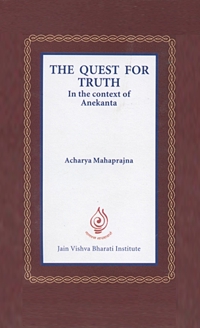
Somewhere there must be a block. A block that prevents the manifestation of truth.
A princess had to be taught music. Prince Udayan's name for tutoring in the stringed instrument of Veena and oral music came to the mind as brightly as the sun. The King through his diplomacy was able to invite the Prince. The King wanted the princess to learn from Udayan and yet wanted to keep them apart, did not want them to meet. So he tied a curtain between the two. He tried to block their minds also. He told Udayan that the princess was blind. "She is embarrassed to sit before you and so will sit behind a veil". To the Princess he said, "Udayan is a leper and so is embarrassed to sit before you. He wants to sit behind a veil". The lessons commenced and went on for some time. Once when the prince was teaching, the princess was just not able to follow. The prince chided her several times and yet the princess could not get the notes. Udayan flew into a temper. He said in a rage, "Be attentive. How many times have I told you and you still do not learn. Blind as you are!" The princess was hurt. She too reacted and said in anger, "Leper, speak with caution" Udayan wondered whom she was referring to. He was not a leper. Why then did the princess say so? Even the princess wondered why the prince was calling her blind. She was not blind. Both of them were now desperate to find out. They removed the curtain and found no one was blind, no one was a leper.
The curtain kept the myth alive that the princess was blind and the prince was a leper. When the curtain was removed truth emerged. I think even the difficulty to understand the fundamentals of Jain philosophy is because a curtain hides it. That curtain has to be removed.
The theory of atoms originated from Vaishesikas and later Jain Philosophers accepted it. Sankhya propounded the dualism of the sentient and the insentient and Jain philosophy accepted it. Such contentions are made on the premise of the assumption that Jain philosophy has no original form. It is surviving on borrowed philosophy. Truth is that as much work as Jain acharyas have done on atom and pudgal, no other philosopher has ever done. Sankhya philosophy can be explained through pudgalastikay. Dharmastikay and adharmaastikay are entirely independent of it. The refusal to accept the antiquity of Jaina philosophy, the lack of a study of the basic texts of Jainism, the Agamas, and the indifference of Jain scholars are some of the factors contributing to making the ideas of Jain philosophy to be understood as borrowed.
Bhagvan Mahavira has analysed truth from the perspective of both metaphysics and ethics. Analysing from the perspective of metaphysics he established the five fundamental substances and analysing from the perspective of ethics he identified nine categories of truth.
According to the metaphysics of the Carvakas only matter has been considered as reality. According to it the four realities are earth, water, fire and air. The visible material world is created by them. That which is not visible has no existence.
The analysis of the propounder of Nyaya philosophy, Maharishi Gautam, is more an analysis based on logic. The philosophy of Vaishesika in comparison to that of Nyaya philosophy is more realistic. One can find systematic explanations of attributes (Gun), Karma, general (samanya) and the particular (Visbesh). According to Jain Philosophy they are not independent. They are qualities of substance itself. In the metaphysics of Sankhya darshan the classification of realities are based on the cosmic order. From its twenty-five realities the fundamental ones are two - Prakriti (matter) and Purusha (soul). The remaining twenty-three are modifications of Prakriti, they do not have an independent existence. According to the principle of five astikayas - each one has an independent existence. No fundamental substance is a quality or division of any other fundamental reality. Medium of motion and rest, giving space, consciousness and colour, smell, taste and touch are special attributes. Because of these the fundamental substances have independent existence. Such classification is neither based on logic nor by accepting the independent existence of attributes nor as a cosmic order. It is essentially an ontological exposition asserting existence of the perceptible, imperceptible, physical and non-physical. From this perspective this analysis is fundamental and realistic.
If the analysis of metaphysics and ethics had been done together then it would have been a mixed analysis like that of Nyaya, Vaishesika or Sankhya. Its scientific approach would have been lost. A brief discussion has been had on the five astikaya substances. Yet, I would like to present a discussion that took place between Mahavir & the disciple Gautam. Gautam asked, "Lord what happens due to dharmaastikay?" The Lord answered, "Man is moving. Wind is blowing, we are breathing in and out, words are being spoken, the eyelids keep blinking, all this is happening because of dharmaastikay. If that were not there, there will be no rising, no falling. If it were not there man would not be able to speak or think. If it were not there then everything will be like a puppet, still and without vibrations.
 Acharya Mahaprajna
Acharya Mahaprajna


